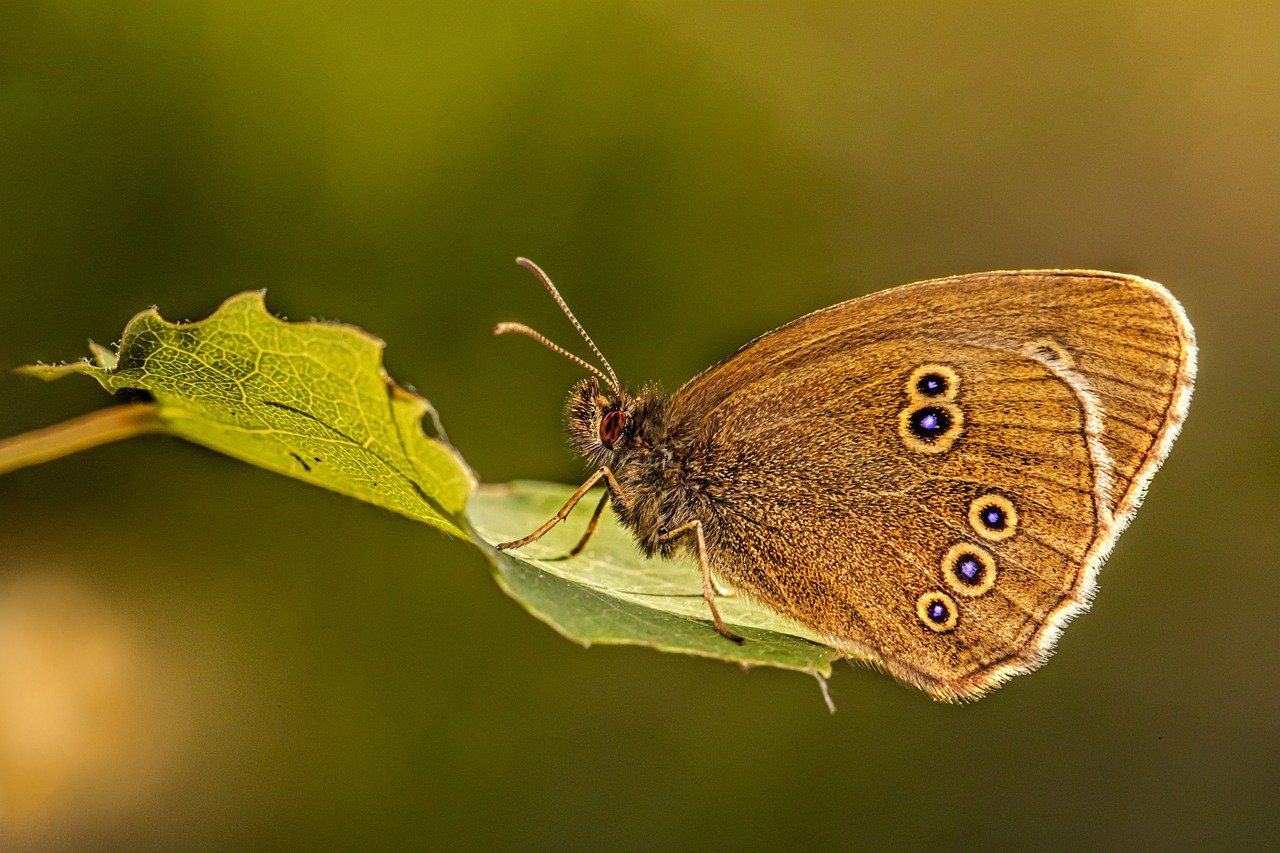Here’s a full overview of the Ringlet (Aphantopus hyperantus), a widespread and easily recognized European butterfly:
Ringlet (Aphantopus hyperantus)
Taxonomy & Classification
- Kingdom: Animalia
- Phylum: Arthropoda
- Class: Insecta
- Order: Lepidoptera
- Family: Nymphalidae (Brush-footed butterflies)
- Subfamily: Satyrinae (Browns)
- Genus: Aphantopus
- Species: A. hyperantus
- Common names: Ringlet
General Description
- Wingspan: 42–48 mm.
- Coloration:
- Upperside: Dark chocolate brown, appearing almost black in fresh individuals.
- Underside: Lighter brown with several distinctive eye-spots (ocelli) surrounded by pale rings, giving the species its name “Ringlet.”
- Sexual dimorphism: Males and females look similar, though females are often slightly larger and paler.
- Flight: Weak, fluttering, often close to the ground.
Behavior & Lifestyle
- Flight period: June to August (depending on latitude).
- Activity: Flies even in dull, overcast, or damp conditions when many butterflies rest.
- Resting: Often perches with wings closed, showing its ringed underside.
- Feeding: Adults take nectar from wildflowers such as bramble, thistle, meadowsweet, and knapweed.
Life Cycle
- Eggs: Laid singly on grasses in mid to late summer.
- Larvae (caterpillars): Feed on coarse grasses such as cock’s-foot (Dactylis), false brome (Brachypodium), meadow-grasses (Poa), and fescues (Festuca).
- Overwintering: Caterpillars hibernate in the base of grass tussocks.
- Pupation: Occurs in loose soil or at the base of vegetation in spring.
- Adult emergence: Early summer.
Habitat
- Prefers damp, shady, and grassy habitats, including:
- Woodland rides and clearings
- Meadow edges
- Hedgerows
- Marshy pastures
- Avoids dry, exposed grasslands.
Geographic Range
- Widespread in Europe, from Iberia and the British Isles across to Siberia.
- Absent from the far south of Spain, most Mediterranean islands, and northern Scandinavia.
Ecological Role
- Pollinator: Feeds on wildflowers and helps with cross-pollination.
- Food source: Caterpillars are eaten by birds, spiders, and predatory insects.
- Indicator species: Presence reflects healthy semi-natural grasslands and woodland edge habitats.
Conservation Status
- IUCN Red List: Least Concern.
- Population trends: Stable and common across most of its range.
- Threats:
- Agricultural intensification reducing flower-rich meadows.
- Loss of hedgerows and woodland rides.
- Conservation needs: Maintenance of damp meadows, woodland glades, and diverse grasslands.
Interesting Facts
- One of the few butterflies that thrives in cloudy weather, giving it a survival advantage in northern climates.
- Eye-spots on the underside help deter predators by startling or misdirecting attacks.
- Populations may vary in number and size of eye-spots depending on region and local conditions.
Visited 943 times, 1 visit(s) today
Views: 1860
Subscribe to the newsletter:
